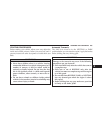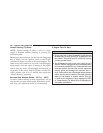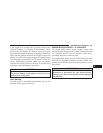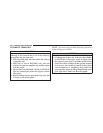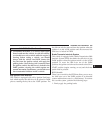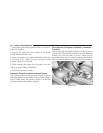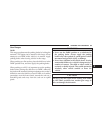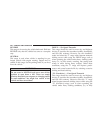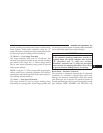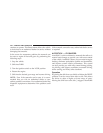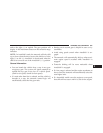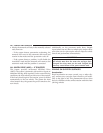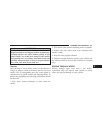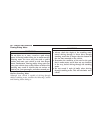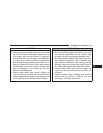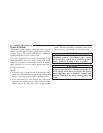
terrain, traveling into strong head winds or while towing
heavy trailers). Under these conditions, using the “3”
range will improve performance and extend transaxle life
by reducing excessive shifting and heat build-up.
“3” (Drive) — Four-Speed Transaxle
This range eliminates shifts into “D” (Overdrive). The
transaxle will operate normally in first, second, and third
gear while in this range. The “3” (Drive) range should
also be used when descending steep grades to prevent
brake system distress.
NOTE: Using the “3” (Drive) range while operating the
vehicle under heavy operating conditions will improve
performance and extend transaxle life by reducing exces-
sive shifting and heat build up.
“L” (Low) — Four-Speed Transaxle
This range should be used for engine braking when
descending very steep grades. In this range, upshifts will
occur only to prevent engine overspeed while downshifts
occur earlier than other gear range selections.
CAUTION!
If the transaxle operating temperature exceeds ac-
ceptable limits, the vehicle computer will override
“D” (Overdrive) and “5” range (for six-speed
AutoStick transaxle) and “3” range (for four-speed
auto transaxle) by changing shift points. This is done
to prevent transaxle damage due to overheating.
Reset Mode - Electronic Transaxle
The transaxle is monitored electronically for abnormal
conditions. If a condition is detected that could cause
damage, the transaxle automatically shifts into second
gear (third gear for six-speed). The transaxle remains in
second gear (third gear for six-speed) despite the forward
gear selected. PARK, REVERSE, and NEUTRAL will
5
STARTING AND OPERATING 303



